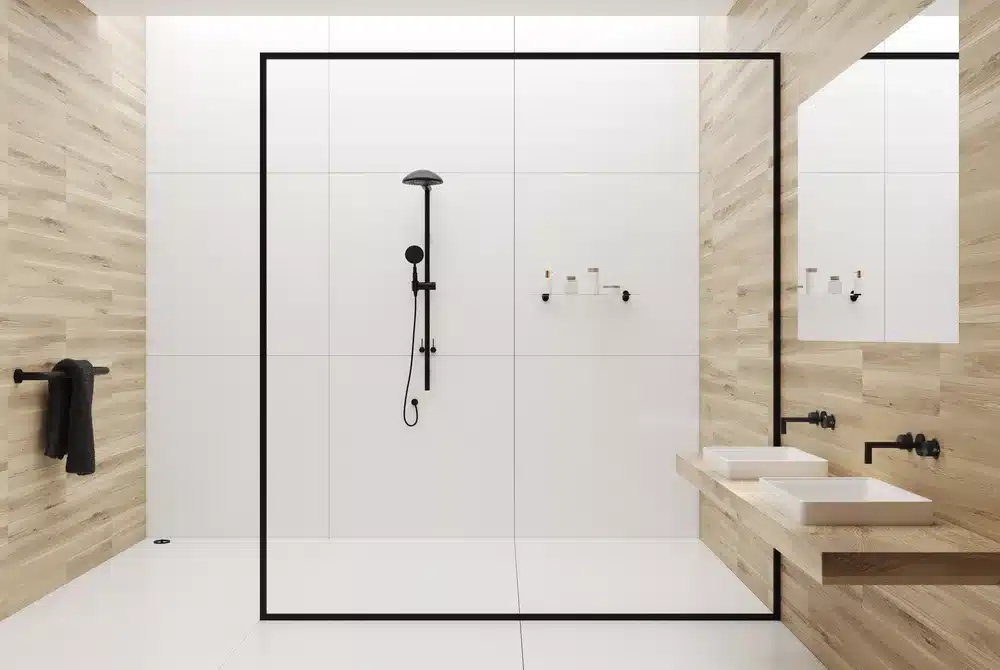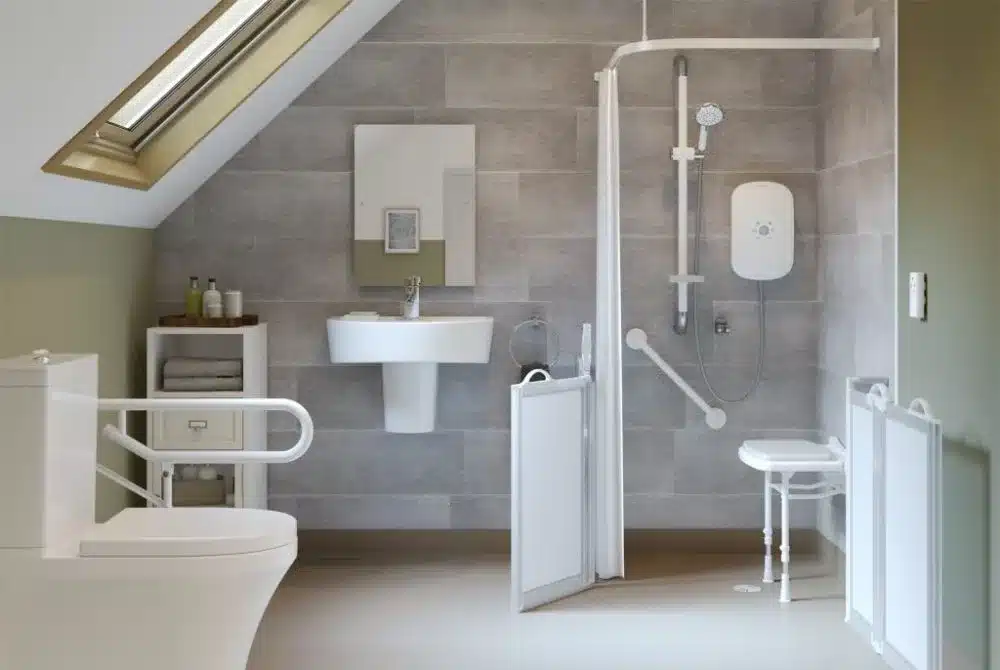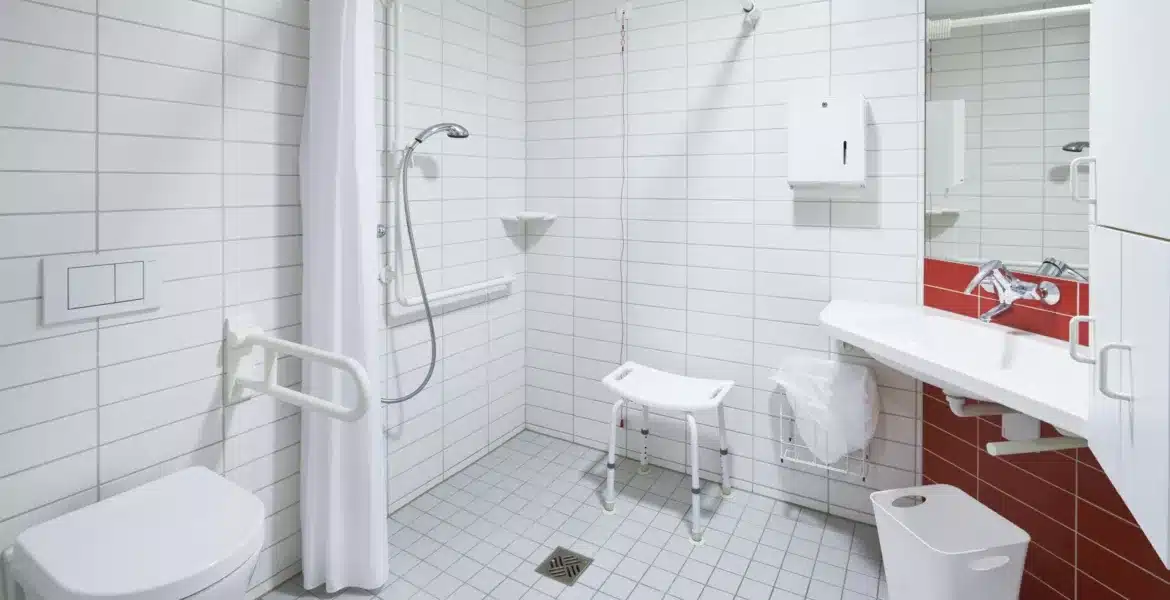Showers for Elderly and Disabled: 5 Pros and Cons of Wet Room Installation
Updated April 2024
Making the switch from a bathroom to a wet room is a major change for anyone and does come with its pros and cons. If you struggle with your mobility or are looking for suitable showers for elderly and disabled people that you care for, changing a bathroom for a mobility wet room could be the solution.
Here are five pros and cons you should be aware of before investing in a wet room.
Installation of Wet Rooms: The Pros
Wet rooms with showers for elderly and disabled users or those who struggle with mobility can make showering easier and safer. At Age Care Bathrooms our customers often tell us how much they enjoy having a shower in their new mobility wet room.
Here are five key benefits of mobility wet rooms for elderly and disabled people.
1. Better accessibility
Wet rooms provide better accessibility, especially for people who use walking frames or wheelchairs. Instead of limiting the area with a shower cubicle, wet rooms open up the floor space and remove the need for shower trays. This is critical in smaller bathrooms, as it helps reduce the risk of injuries from bumping into things with a walking aid or wheelchair.
Wet rooms feature level and slip-resistant floors throughout, and without a shower tray, going in and out of the shower area is much easier and safer for anyone with mobility limitations or balance problems. The additional floor space also makes it far easier for a person to manoeuvre a wheelchair into the right position to use the toilet and sink.
2. More design options
Shower-only wet rooms are great space savers. By removing the bath and, or shower cubicle, you free up room for innovative features. Increased floor space means you have extra flexibility with the layout and can design the space to support your mobility requirements and personal preferences.
Consider adding elements that increase safety, comfort and convenience, such as:
- Grab rails
- Heated towel rails
- Shower seats
- Lowered sink
- Accessible toilet
- Digital showers
- Mixer taps
- Accessible storage.
These enhancements can significantly enhance the user experience while adding luxury and key safety features.
3. Can increase property value
Installation of wet rooms can potentially increase the value of your property. Homes with accessible showers for elderly and disabled users are in high demand, and a wet room is a feature that can help to sell a property. As they are often laborious and expensive to install, purchasing a property that already has a wet room is a definite bonus for a lot of people.
A wet room might increase the value of the house by thousands of pounds with the appropriate buyer. Paul Gibbens, Property Specialist at Housebuyers4u, said in an article for the Express that: “A wet room could increase the value of your home by £2,000-£5,000.”
So, not only can a wet room enable you or someone you care for to live more comfortably and safely at home for longer, but it’s also possible that it will add value or make your property easier to sell.
4. Easy to clean and maintain
Shower-only wet rooms are much easier to clean and maintain than your standard bathroom, especially if the bathroom is small. With no shower tray, shower screen or bath to manoeuvre around and keep clean, the effort and time it takes to clean a wet room is instantly reduced. For older people and those with mobility issues who find cleaning difficult, this is a huge benefit and may encourage better self-care and personal hygiene practices.
5. Lower energy bills
A shower-only wet room is more energy efficient as a shower uses less hot water than a bath. Other experts also claim that if you are comparing the cost of a bath with a shower, a shower is the most affordable choice.
Martyn Bridges, Worcester Bosch’s director of technical support, stated to The Guardian: “A typical bath requires about 90 litres of water, split between 60 litres or so of hot water and 20 to 30 of cold.” he went on to say: “A normal thermostatic mixer shower head discharges about 9 litres a minute, requiring about 6 litres of hot and 3 litres of cold.”
Therefore, if you shower for around 10 minutes or less, you will use two-thirds of the hot water required for a standard bath. Over the course of a year, this could save you a considerable amount of money.
Age Care Bathrooms has been creating and installing mobility wet rooms for over 30 years. Call our team of bathroom experts or fill out our online form, and we’ll assist you in selecting the ideal wet room for your requirements.


Installation of Wet Rooms: The Cons
Although wet rooms offer accessible spaces with easy-to-use showers for elderly and disabled users, there are cons to the installation of wet rooms that should be taken into consideration. Adapting a bathroom is an investment, and it’s important to think about individual requirements and how they will be met both now and in the future.
1. Expense
Compared to the cost of standard bathrooms, wet rooms are typically more expensive to install due to the waterproofing preparation that needs to take place. Wet rooms are also more specialist and are not supplied and installed by every bathroom company. Subsequently, you’ll have fewer choices when it comes to price.
2. Installation time
Installation of a wet room tends to be more complex than a standard bathroom. To ensure the waterproofing is done correctly and the room is completely dry, you must allow extra time for the preparation and installation.
4. Damp and mould problems
This may seem obvious, but it’s still important to mention. Because there is no shower door or tray, it’s easier for the entire wet room to get wet. This means the entire surface of the walls and floors will get damp, which can lead to mould. The smaller the wet room, the more likely it is to get damp quickly. Ensuring adequate ventilation with an extractor fan in the correct position will help to minimise dampness and the growth of mould.
5. Water drainage
If your wet room hasn’t been installed properly, you can experience water drainage problems. This could result in a build-up of water and could eventually flood your home. You can avoid this by choosing a reputable wet room installer, such as Age Care Bathrooms, who has the experience and knowledge to install your wet room correctly.
Installation of Wet Rooms Summary
A wet room can benefit disabled and older people who struggle to use a standard bath or shower cubicle. Although the expense of installing a wet room can be high, in most cases, a wet room will increase the value of your property and can be an excellent selling point. In the longer term, a wet room can also accommodate a wide variety of needs and is easier for wheelchair users.
Wet rooms for the elderly can be a brilliant addition to any home, especially for those who struggle with mobility. Start your wet room journey today with Age Care Bathrooms, and get in touch with a member of our team for more information.













